The Rolex Explorer 14270, a Perfect Youngtimer Watch (Incl. a Detailed History of the Model)
One of the best examples of a timeless classic that mixes vintage appeal and modern construction.
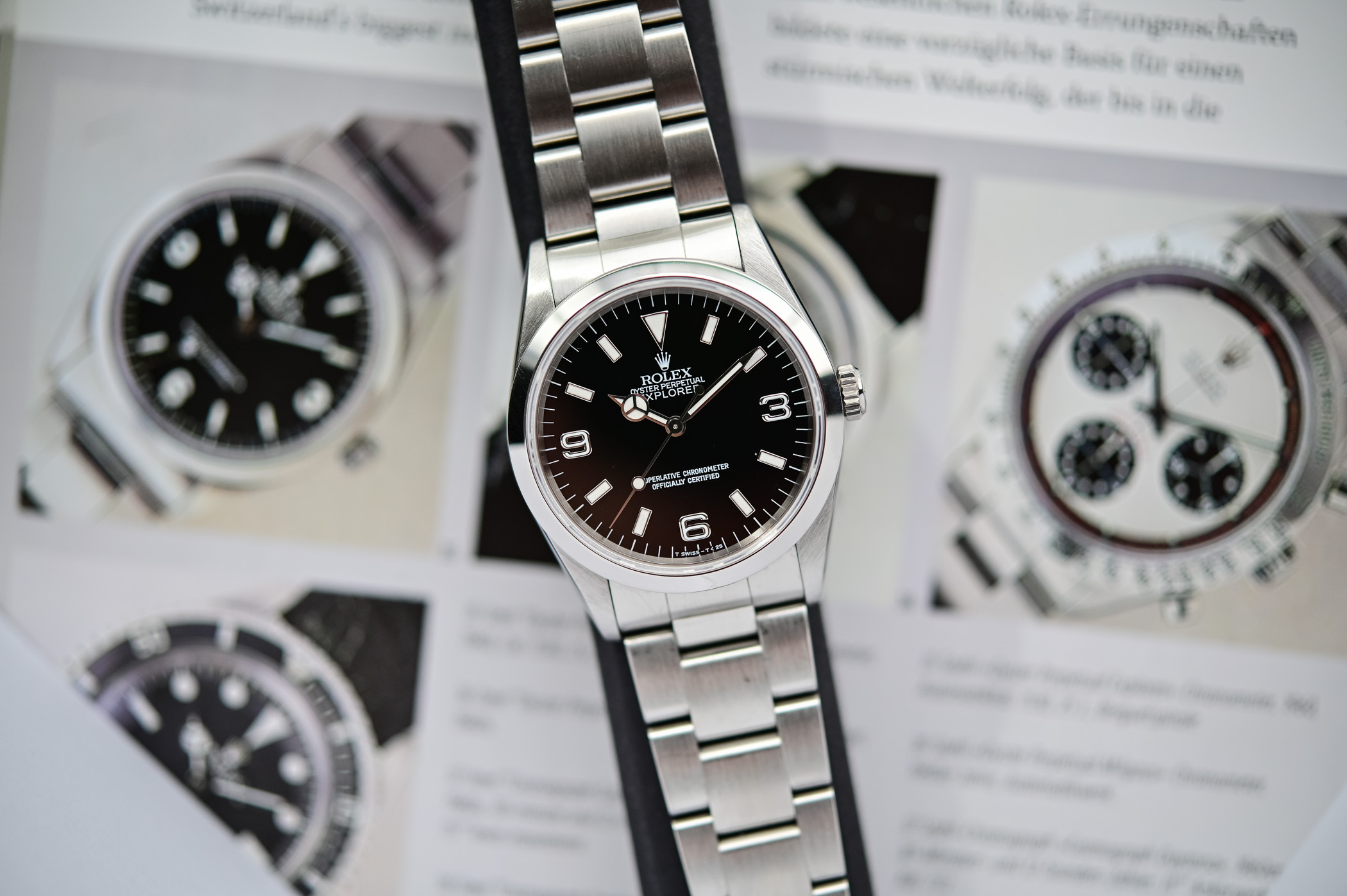
If you’re in the market for a vintage Rolex watch, there are countless options, from pre-WWII Bubble Back watches, early sports models from the 1950s, all-time 1960s classic steel watches or, if it’s your thing, elegant gold watches with complications. However, there’s a new trend coming named ‘youngtimer’ (an identical name is used in the car industry)… Watches that, for some, merge the best of both worlds, the taste of vintage without the complications of vintage, the size of an old watch with the comfort of modernity. And when it comes down to this kind of watch, the 1990s Rolex Explorer 14270 has quite a few arguments in its favour. And this will be the topic of today’s instalment of “The Vintage Corner”.
‘Youngtimer’…? This concept was first used in the vintage/classic car market, to define models that were not yet classic cars (for instance, in France, a car must be over 30 years old to be granted the collection licence plates and registration) but that were old and important enough to gain a collectable status – but which weren’t necessarily rare and expensive. This usually refers to 1980s and 1990s cars and ranges from a Testarossa to a 205 GTI to an early BMW M3.
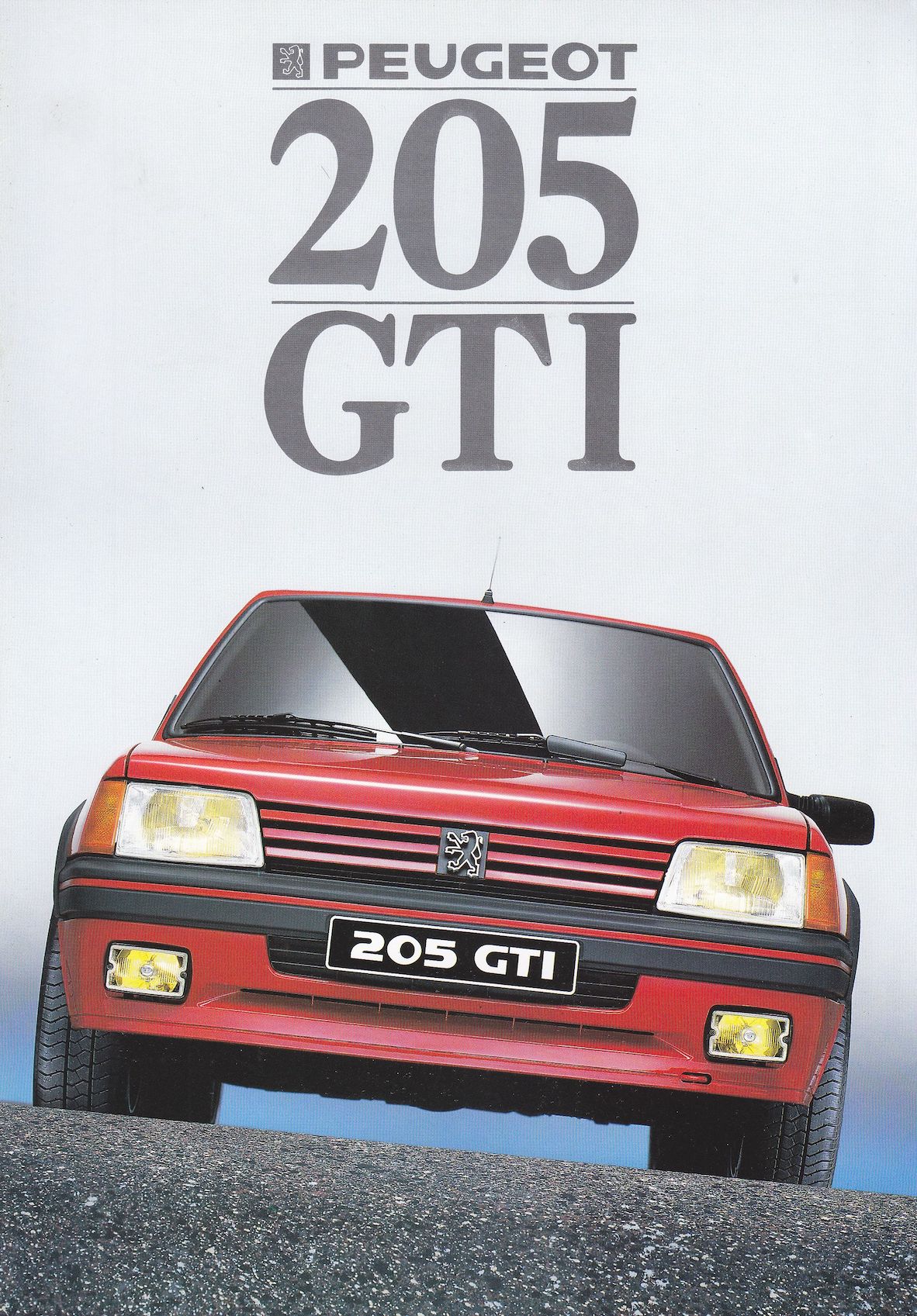
By analogy, we can apply an identical strategy to the watch market and admit that some watches, which are out of production, could potentially gain in collectability, without yet being worthy of vintage status. By that we mean 1980s and 1990s models, for instance, early IWC Flieger Chronographs, 1990s TAG Heuer Carreras, the late Mark Speedmasters and, of course, a bunch of Rolex models – Zenith-powered Daytonas, Sea-Dwellers 16600, GMT-Masters 16700, Submariners 16610 (and in fact, most of the 5-digit watches and early-sapphire models). And one that is important for this article, the Rolex Explorer 14270, produced from 1989 to 2001 and possibly the most important update in the history of the Explorer model.
History of the Rolex Explorer
If the name Explorer dates back to 1953, when the first watch with this patronym was introduced, the history of the model requires us to look further back in the past to understand where it comes from… And yes, “Explorer” has to do with exploration (how surprising!).
The Everest connection
Up until the 1930s, Rolex had been involved in exploration adventures and had tested watches on Himalayan expeditions to ensure their resistance to extreme temperatures and low oxygen saturation. The climax (a very adequate word, indeed) of exploration for Rolex came in 1953 when Tenzing Norgay and Sir Edmund Hillary became the first climbers to reach the summit of Mount Everest. It is now well-known that watches were involved in this expedition, from Smith and, of course, Rolex.

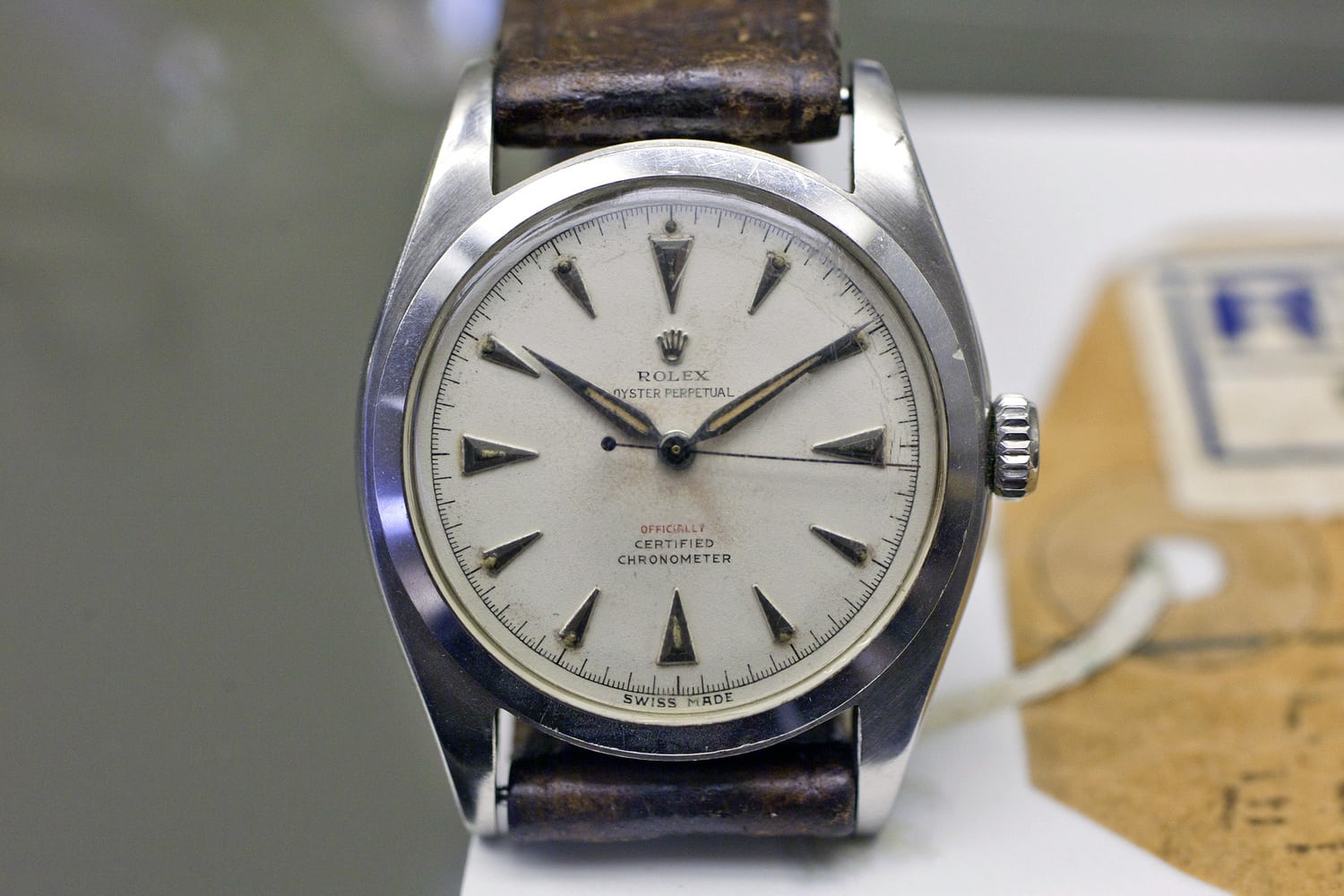
In order to provide the men with reliable timekeepers, Rolex delivered an early Explorer, known to be an Oyster Perpetual reference 6098, worn by Norgay (as Hillary apparently wore the Smith watch). This watch, however, had none of the Explorer features – no 3-6-9 dial, no Mercedes hand. Yet, Rolex registred the Explorer name that same year, with the clear intention to use this successful climb as a communication tool.
1953/1959 – Rolex Explorer 6150
As often was the case with watches back in the 1950s, the beginning of the Explorer’s life was a bit more complex than the launch of a new model. Just like the beginning of the Submariner’s life, the Explorer’s life reveals that not one but multiple references were available simultaneously.

It seems right to admit that the first watch that displays the classic Explorer features – but not yet known as the Explorer – was the reference 6150, closer to a commercialized prototype than a production watch. In fact, this watch was still named “Precision” and was developed to be the most rugged of the models in the Oyster line. This watch had still a lot in common with the 6098, including its Calibre A296 (not COSC-certified), or the classic 36mm steel case with a smooth bezel. The earliest models, with their Explorer-free dials, are often referred to as “Pre-Explorer” watches and the name of the model was only introduced later on this reference. However, it is one of the very first Rolex with the iconic black dial and 3-6-9 hour markers combined with a Mercedes hand. Due to its almost prototype status, the early 6150 “Explorer-free” is one of the most collectable watches in this collection.
1953/1955 – Rolex Explorer 6350
Introduced only a few months after the reference 6150, the Rolex Explorer 6350 was the very first to feature the “Explorer” name on its dial. As such, it could be considered the real deal when it comes to date the introduction of this watch collection.
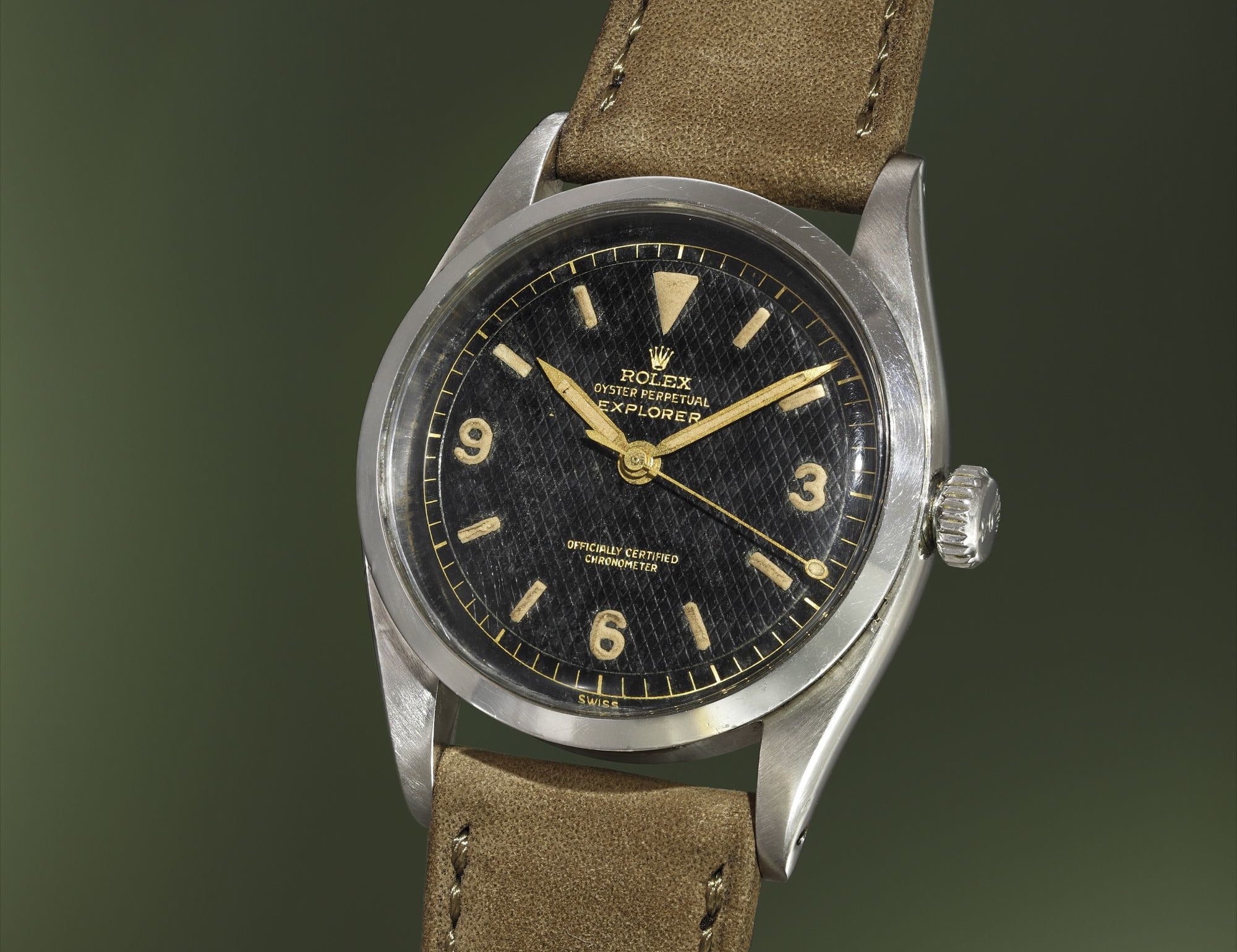
The Explorer 6350 is still a very special watch, a true instrument watch made purposefully for exploration – for example, special movement oils with -20C to 40C operation range could be ordered. The 6350 is the result of the tests done by Edmund Hillary and Tenzing Norgay when climbing the Everest. It was also powered by Calibre A296 but “Officially Certified Chronometer” and housed in a 36mm stainless steel case. Besides the 3-6-9 dial, the Explorer printing and the Mercedes hand (not always), the most unique feature of this model was, on some watches, a honeycomb dial, a pattern also found on early Milgauss models. The Rolex Explorer 6350 had a short life and was discontinued in 1954, while the 6150 was still in production.
1955/1963 – Rolex Explorer 6610
Launched in 1955 as a replacement to the 6350 and produced until 1963, the Rolex Explorer 6610 is the watch that defined the foundations of the model and that really secured the watch’s position in the permanent collection. It bears all the classic traits of the Explorer, with the 3-6-9 dial, the Mercedes hand, the Explorer-printed dial with gilt markings and the 50m water-resistant case with 36mm diameter. It also came with a new movement, Calibre 1030.
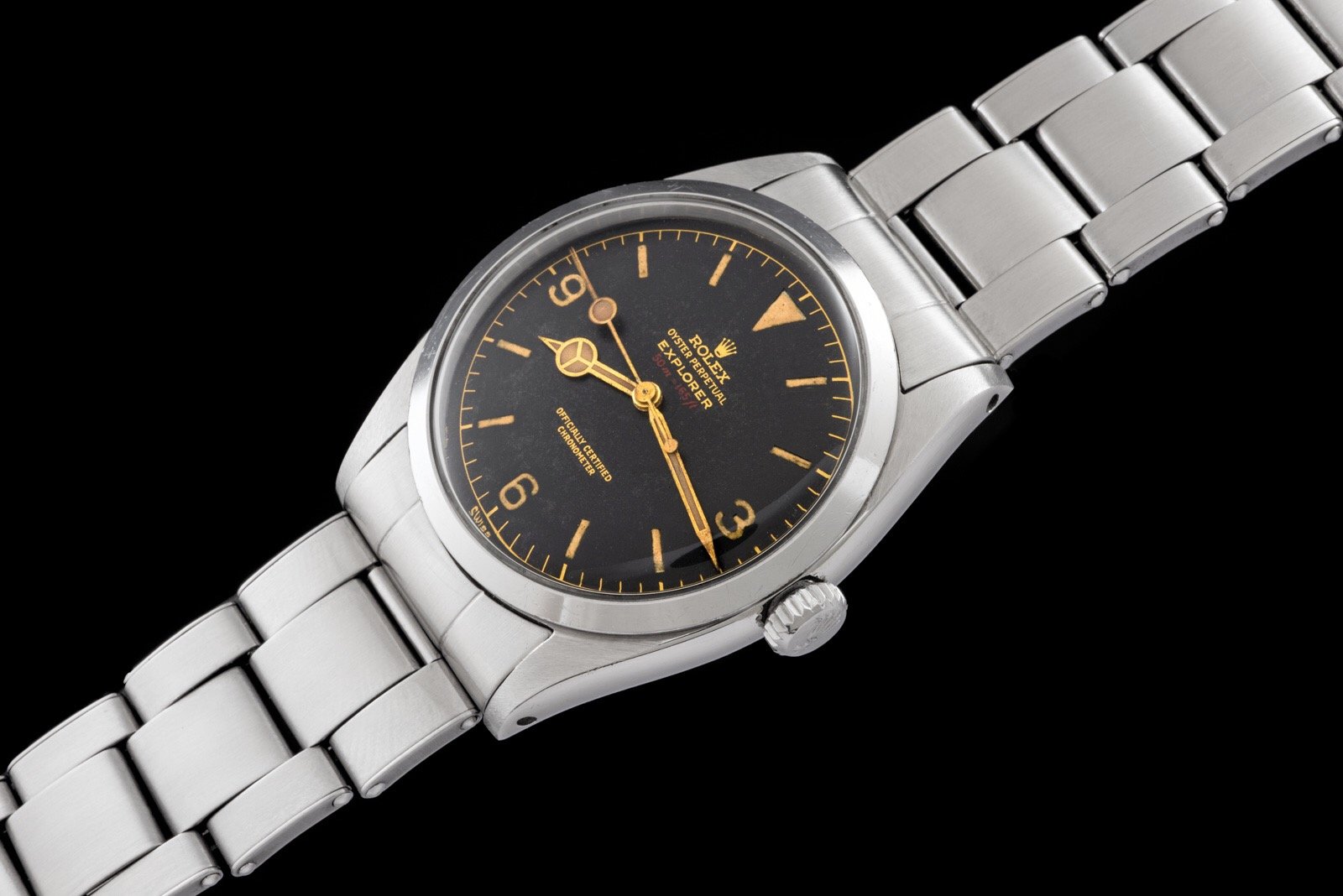
Some models carried a coveted red depth rating, some have a white depth rating, some are free of a depth rating. There’s even an extremely rare “polar” version (most certainly a prototype), which sold for approximately 10 times the actual price (on average, EUR 17,000) of a regular reference 6610.
1963/1989 – Rolex Explorer 1016
To most collectors and vintage enthusiasts, the Rolex Explorer 1016 is the definitive version, having been produced for a staggering 26-year period – not without updates, though. It is the essential Explorer, and due to its long production run is the one that is the easiest to collect and to find on the vintage market.
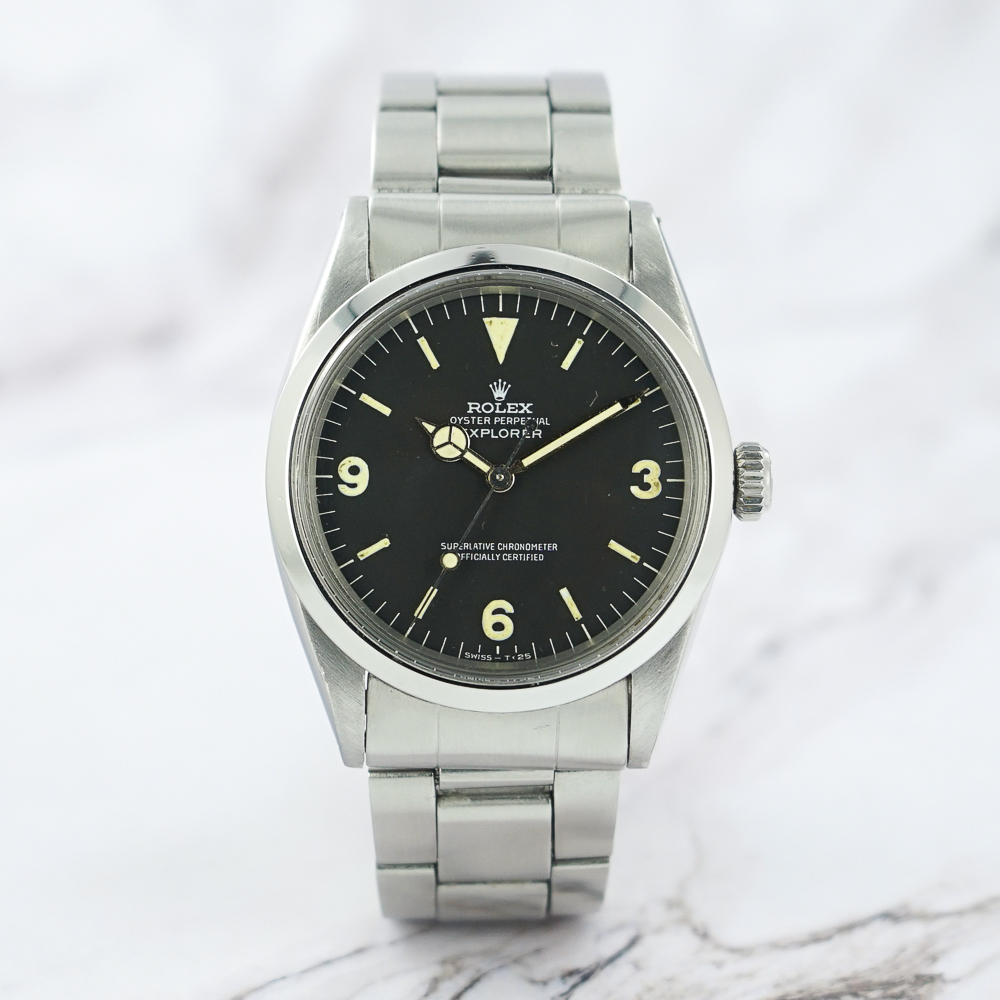
The reference 1016 started life with a 36mm steel case, water-resistance to 100m, a gilt 3-6-9 dial with golden hands, the Calibre 1560 and a riveted or folded-link bracelet. It would undergo multiple evolutions over its long career, as for instance in 1975, when Rolex updated the model with a solid link bracelet (but not solid end-links) and the Calibre 1570 with a hacking function. Over the years, the gilt dials would make room for classic matte black dials with tritium indexes and white markings. And in the heart of collectors, the Explorer 1016 is still considered as the last of the true vintage Explorer watches.
1989/2001 – Rolex Explorer 14270
The most important update in the life of the Rolex Explorer occurred in 1989 when the brand introduced a brand new version of this watch – which, until this point, hadn’t undergone any drastic evolutions. This watch is reference 14270 and is the model that marked the renaissance of the Explorer in the 1990s when rugged, instrumental watches were changed for more luxurious pieces. Even though it featured some of the classic traits of the collection, this watch marks an immense departure from reference 1016.

Evolutions were visible everywhere on the watch. The 14270 featured a new case, still at 36mm, but with a modern shape. It replaced the Plexiglas crystal with a sapphire. The dial was lacquered with applied indexes in white gold filled with tritium as opposed to painted tritium numerals. Finally, the movement was updated to the modern Rolex Calibre 3000.
The Rolex Explorer 14270 was produced from 1989 until 2001, with subtle evolutions over its career (more on that below), before being replaced by the visually similar reference 114270.
2001/2010 – Rolex Explorer 114270
The Rolex Explorer 114270, launched in 2001 and discontinued in 2010, was the last of the “small” Explorer watches with a 36mm case. Visually similar to the previous reference, it brought mainly mechanical updates with the Calibre 3130. All the models, of course, had Super-LumiNova dials. The bracelet also featured solid end-links.

As of 2010 – Rolex Explorer 214270
Last but not least is the Explorer 214270. The model as we know it today, with its modern look, its 39mm case with a modern Oyster bracelet, its modern Oyster clasp, its dial with applied indexes and the Calibre 3132.
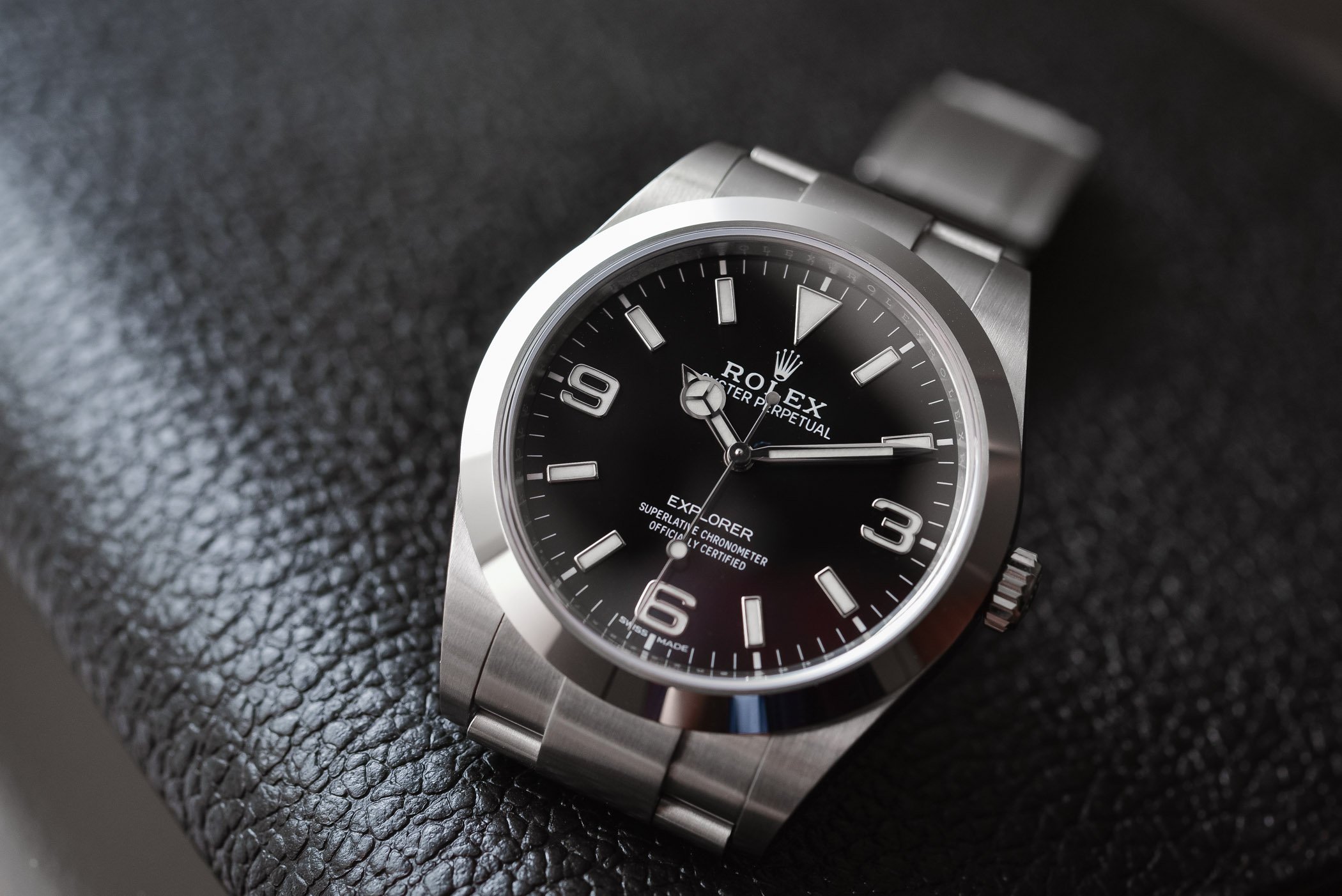
There are two generations of 214270s. The Mk1 shows non-luminous 3-6-9 applied indexes and hands that are relatively short – which somehow caused some troubles in the collecting community as they were directly taken from the 36mm reference 114270. In 2016, Rolex corrected its Explorer 214270 with the Mk2, bringing back the luminous 3-6-9 indexes and some appropriately longer hands.
The Multiple versions of the Rolex Explorer 14270
As often with older Rolex models, one reference number doesn’t necessarily mean one single style, a single set of specifications and watches that are entirely identical. One of the best examples of a watch that has known multiple lives in its life is the Rolex Explorer 14270. There is not just one generation of this watch, but multiple generations. And it mostly has to do with dials and luminous materials.
Before we move on to the different variations of this watch, let’s look at the common points:
- Case: all models share a 36mm stainless steel case with 100m water-resistance, a flat sapphire crystal, and a screw-down crown (not trip-lock). The top of the lugs is brushed, with an angled pattern, the caseband is rounded and polished and the bezel is flat and polished.
- Dial: all models have a glossy lacquered black dial with white markings, applied white gold indexes, classic Rolex handset with Mercedes hour and lollipop seconds. The dial has “Oyster Perpetual Explorer” printed at 12 o’clock and “Superlative Chronometer Officially Certified” printed at 6 o’clock.
- Movement: all Explorer 14270 models have the same automatic movement: Rolex Calibre 3000, beating at 28,800 vibrations per hours, with 27 jewels and 48h power reserve. It is the last of the Rolex movement with a balance cock (before changing it for a transversal bridge).
- Bracelet: all versions are equipped with solid-link steel bracelet reference 78790, folded end-links reference 558B and a standard stamped clasp.
Let’s now look at the different versions of the Rolex Explorer 14270:
- Early “Blackout” tritium dial, lug holes – a bit of a mystery, but also the most collectable (being the rarest) of the Explorer 14270s, the “Blackout” features 3-6-9 indexes filled with black enamel. Examples reported from late 1989 until 1991, and it seems that these were the first models to leave the manufacture. Comes with a T-SWISS-T <25 tritium dial and lug holes.
- Tritium dial, lug holes – as of 1991, Rolex went back to white indexes all over the dial. No other evolutions, still a T-SWISS-T <25 tritium dial and lug holes.
- Late tritium dial, no lug holes – following the removal of lug holes across the collection, Rolex slightly updated the Explorer with plain lugs around 1994. The dial, however, doesn’t change and retains its tritium-filled indexes.
- “Swiss-only” dial, LumiNova, no lug holes – with tritium being banned from watchmaking, brands had to find another solution, namely LumiNova. To mark the change from tritium to this modern, non-toxic luminescent material, Rolex updated the dial of the Explorer 14270 with “Swiss-only” signature. This model was produced for under two years, between 1998 and 1999.
- Late “Swiss Made” dial, Super-LumiNova, no lug holes – For the last three years of production, Rolex updated its Explorer 14270 with Super-LumiNova and, incidentally, a “Swiss Made” dial.
Below, from left to right and from top to bottom: Blackout 3-6-9 and tritium, white 3-6-9 and tritium, Swiss-only dial and Swiss-Made dial (all photos by analogshift.com).
What makes it a great Youngtimer watch?
The Rolex Explorer 14270 is a model with its own market and own potential clients. On the one hand, it won’t appeal to hardcore vintage enthusiasts who will point to the lack of patina, the lack of charm, its too luxurious appeal, the applied indexes or the glossy dial as evidence of this watch’s modernity. On the other hand, watch enthusiasts in the market for a modern-sized, new timepiece with robustness and wrist presence will certainly be reluctant to go for a rather small 36mm watch, which will feel slightly outdated.
The concept of ‘youngtimer’ is about compromise. These not-so-old but not-so-young-anymore watches are, to many, unbalanced – for the reasons we just mentioned. They don’t fall into the modern watch concept but they can hardly be named vintage (yet). The ‘youngtimer’ watch is a niche market for now. However, it will most certainly respond to the needs of more than a few collectors. As long as you look at the other side of the coin, ‘youngtimer’ watches bring their own balance, and from this point on, you can see them as merging the best of both worlds. Tritium markers that will get a nice, light-coloured patina, the incomparable beauty of an older Rolex case, elegant proportions, timeless design on one side. The robustness of the case and the movement, the water-resistance, the sapphire crystal and the slightly more formal appeal of the applied indexes and glossy dial on the other.
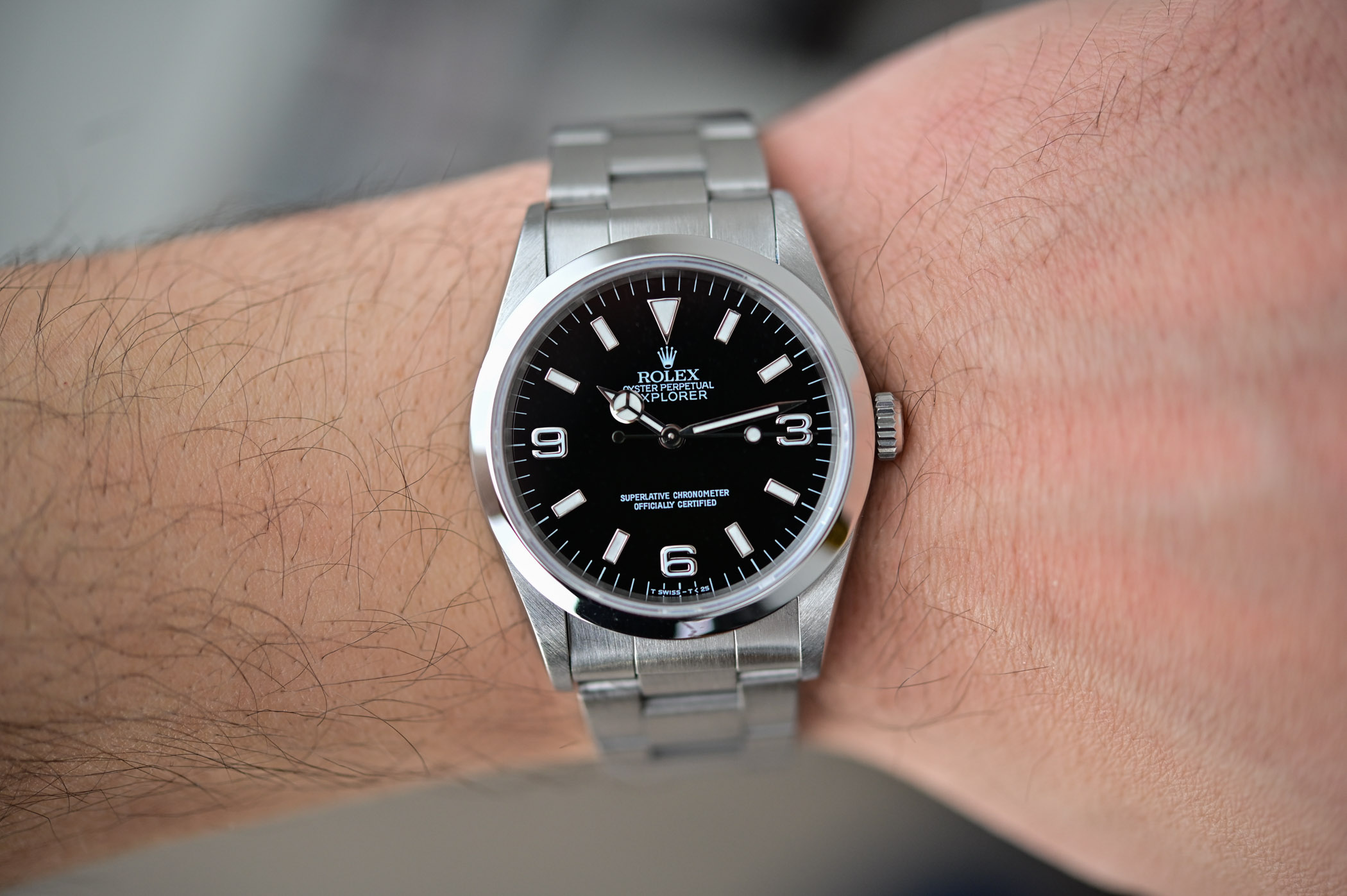
Wearing a vintage watch on a daily basis can be difficult, due to the inherent risks. Without mentioning the lack of water-resistance, a shock could ruin parts that are extremely difficult to source, or so patinated that replacing them would kill the beauty of this vintage piece. Servicing a 50-year-old movement and having it precisely adjusted isn’t as easy as with a modern calibre. The riveted bracelet of a 1960s Rolex will have some stretch and can potentially break. Some accept these risks and become vintage collectors, some don’t. But that doesn’t mean they want to wear a 40mm block of steel on the wrist.
The Rolex Explorer 14270 is a great watch because it is a Rolex Explorer, and that alone is quite a big deal. But it is also a great ‘youngtimer’ watch because it has a very appealing balance between charm and reason. You can wear it without thinking about it. Unscrew the crown, wind it, set the time and it’ll go, always. But you’ll also enjoy those superb pointy lugs and the nice rounded casebands, as well as the charm of wearing a smaller watch, and looking at the tritium indexes slowly developing a bit of patina – but not the kind of toxic-looking patina you can sometimes see on 1950s watches.
And then comes the price… Vintage Rolex watches, mostly steel sports watches from the 1950s to the late 1970s, are now almost unattainable for the majority of watch enthusiasts. An Explorer 14270 is still today among the most accessible of Rolex watches – more on that below. Maybe you’ll question the collectibility potential of these watches… but, who, in the mid-1980s, would have imagined that a nice (but not extraordinary) 1960s Submariner 5513 would cost about EUR 15,000 today? Well, given this, and the currently reasonable prices for a 14270, it might be worth the risk. It appears that average prices are slowly going up, but will hardly ever go down.
And then there’s the trust factor. Buying a vintage 1960s Rolex can be difficult, unless you have full trust in the seller or you’re knowledgeable enough to distinguish correct parts from inappropriate parts – which, with Rolex, isn’t easy. With a ‘youngtimer’, this risk will be highly minimized.
So, once again, the Rolex Explorer 14270 isn’t the perfect watch. It has its own target group, the ‘youngtimer’ enthusiasts… but for them, what a great watch it is!
Rolex Explorer 14270 – The market
Finding a Rolex Explorer 14270 is relatively easy as the production ran for over 10 years. Also, being a rather modern Rolex watch, it is known as a reliable piece, with parts widely available and service operations done easily. Second, being a ‘youngtimer’, finding an example with box and papers isn’t so difficult. As always, this will add a few hundred to final price but it won’t be impossible (at all) to find a full-set, well-preserved example. With a bit of patience and research, the 14270 could easily be yours – as long as you respect basic principles, such as “buy the seller, not the watch” and making sure that production numbers, parts numbers and papers all match.

Regarding the price, it will depend on the version, but on average EUR 5,500 will be an appropriate budget for a nicely preserved, full-set, no lug holes, tritium dial model. Early models with lug holes will probably require an extra EUR 500, so will “Swiss-only” models and you’ll be able to find late Swiss-Made examples without box and papers for about EUR 4,500. And regarding the “Blackout” models, expect a massive premium, as this specific model can easily sell for over EUR 17,000. Is it worth the investment? To me, no. But if you’re in the market for a rare Rolex watch, you know what to expect.



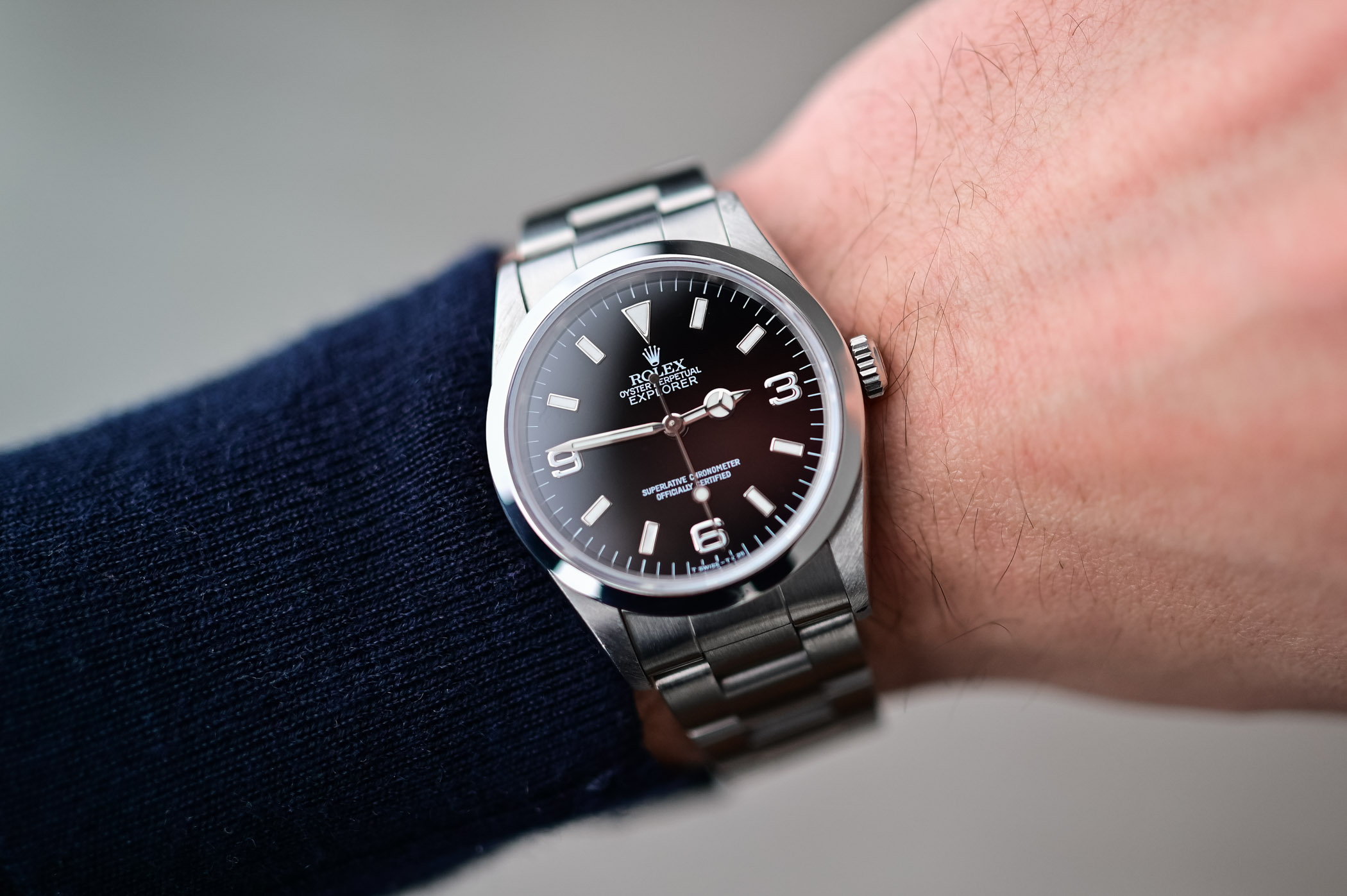
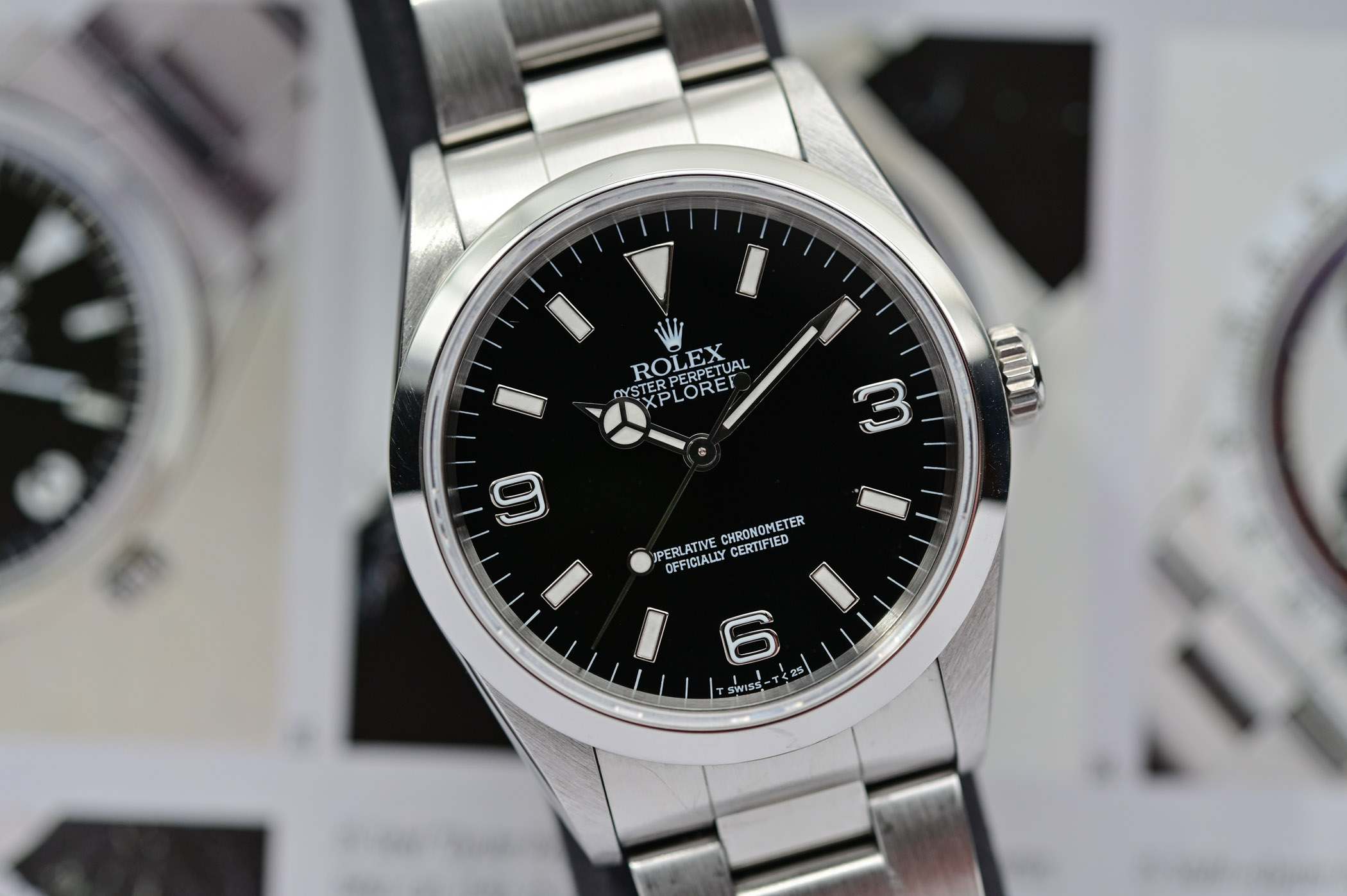
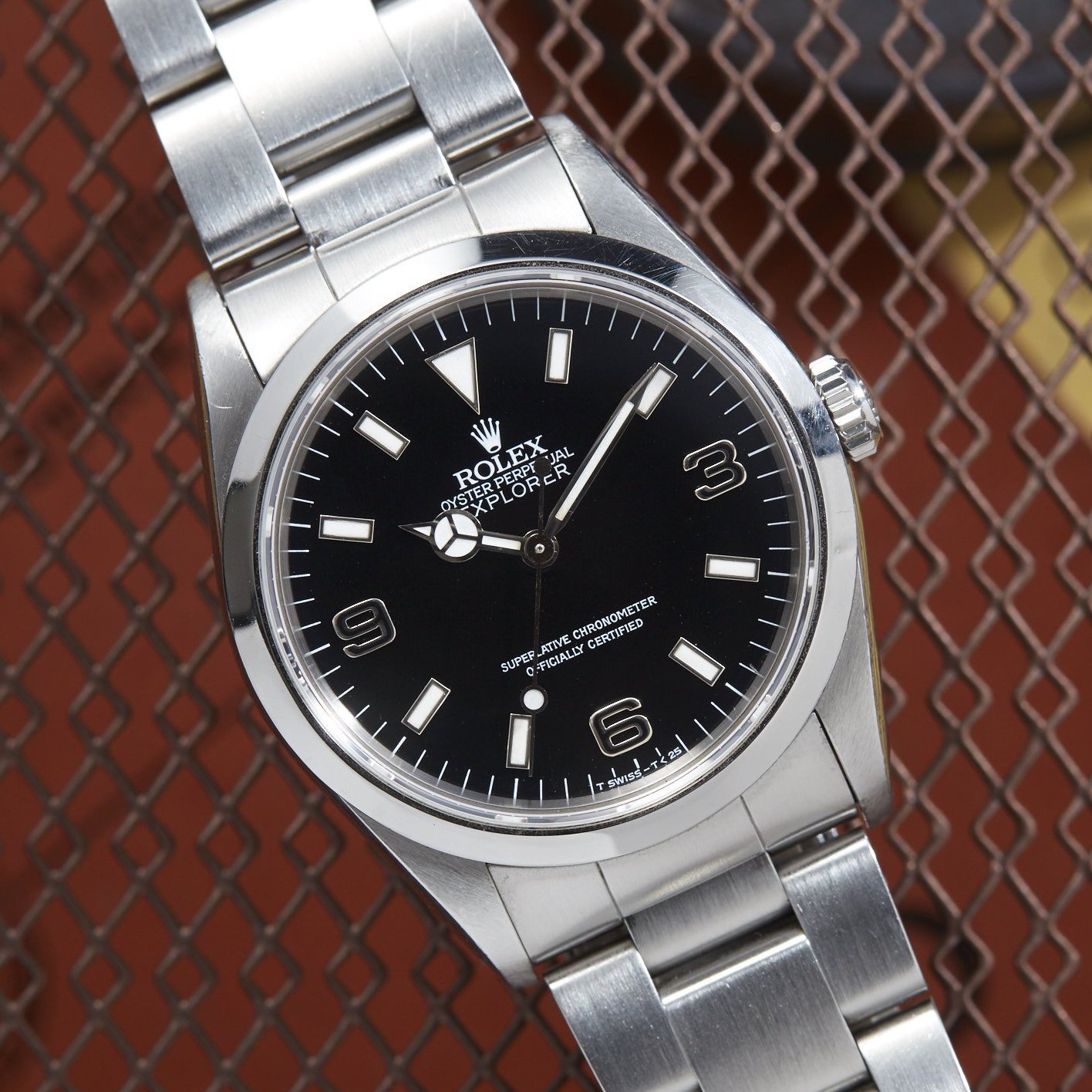
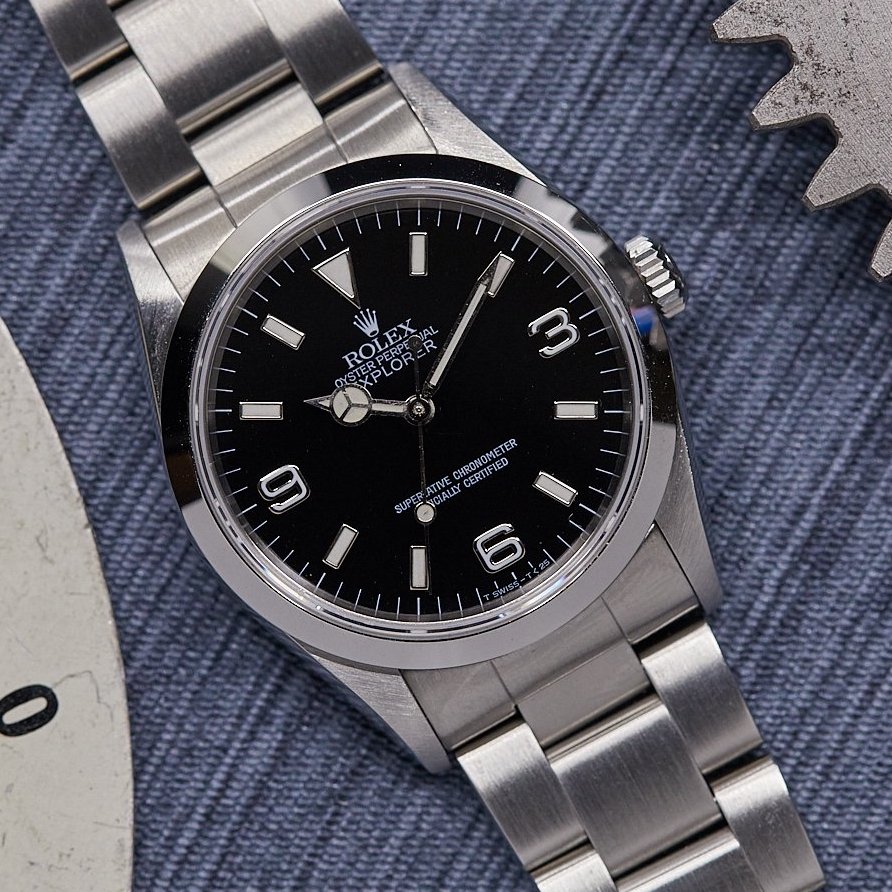

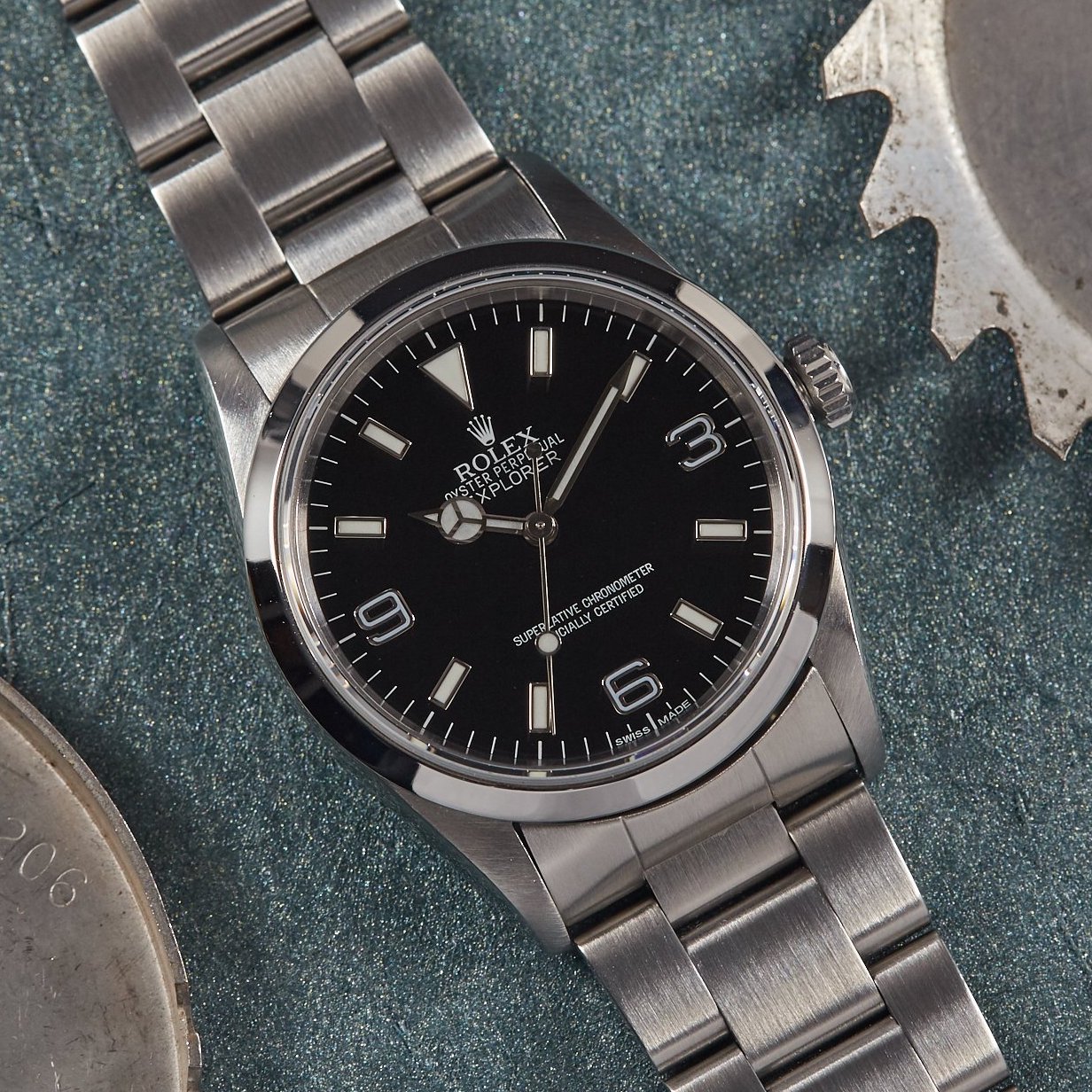
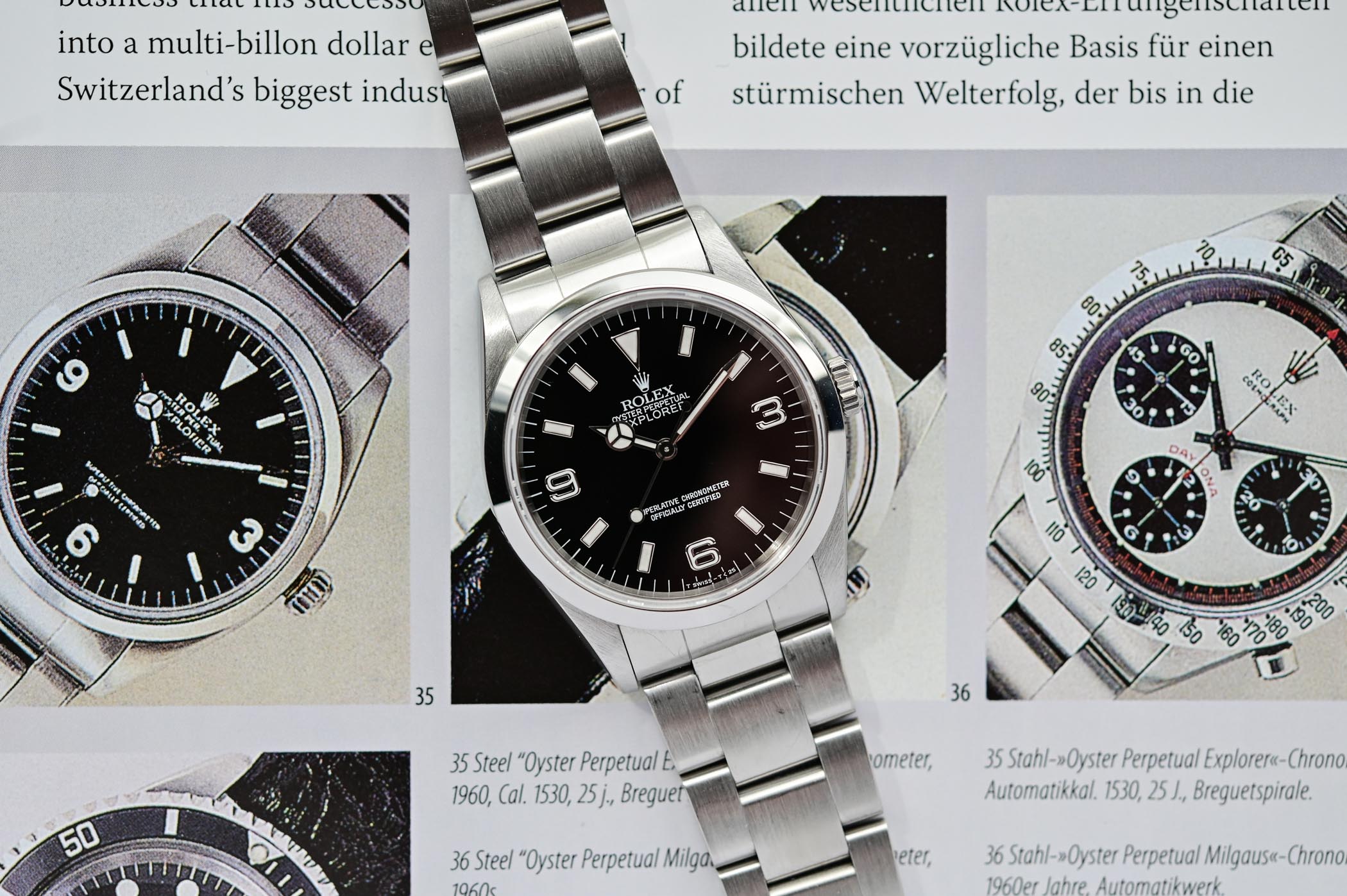
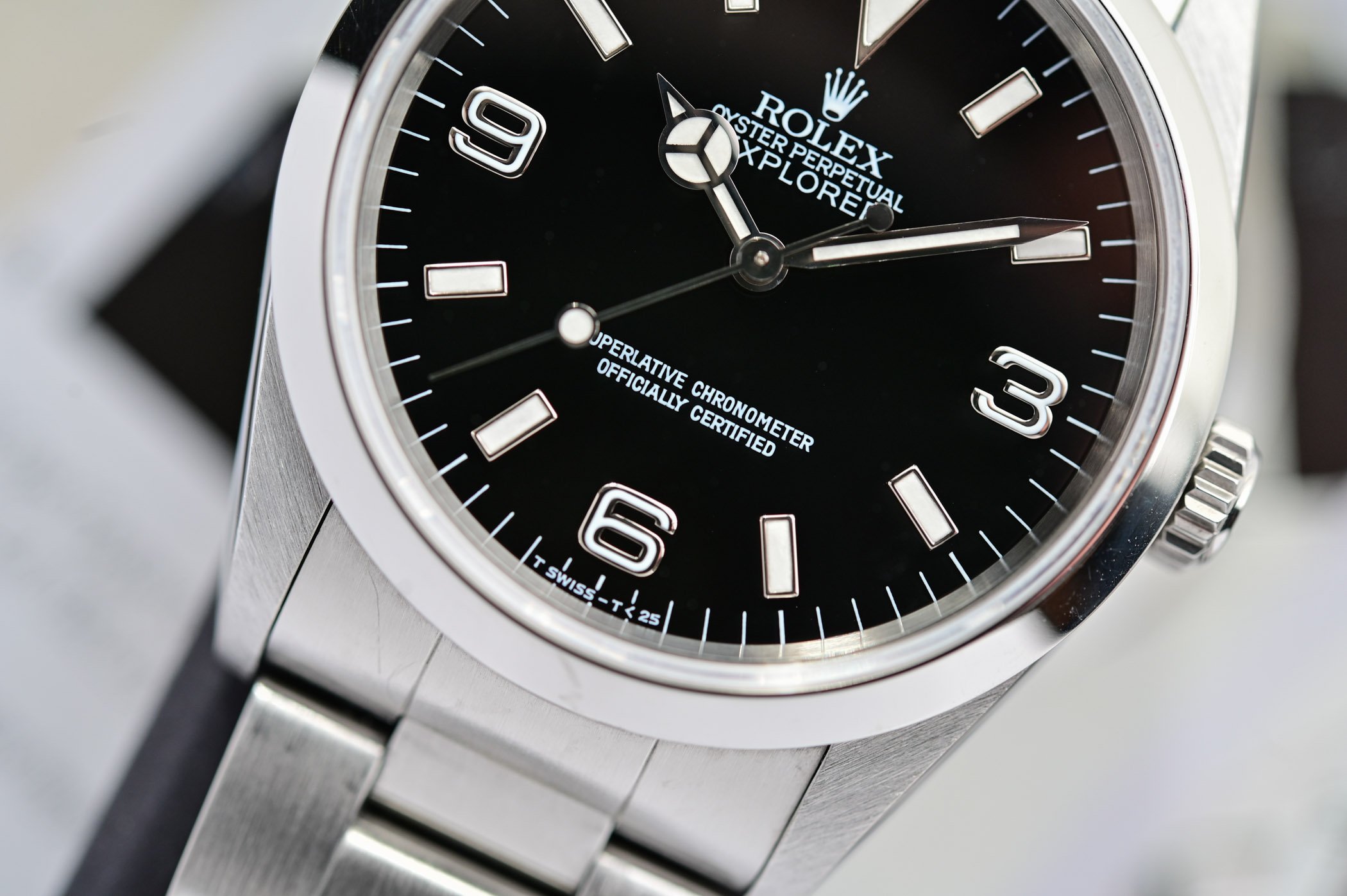
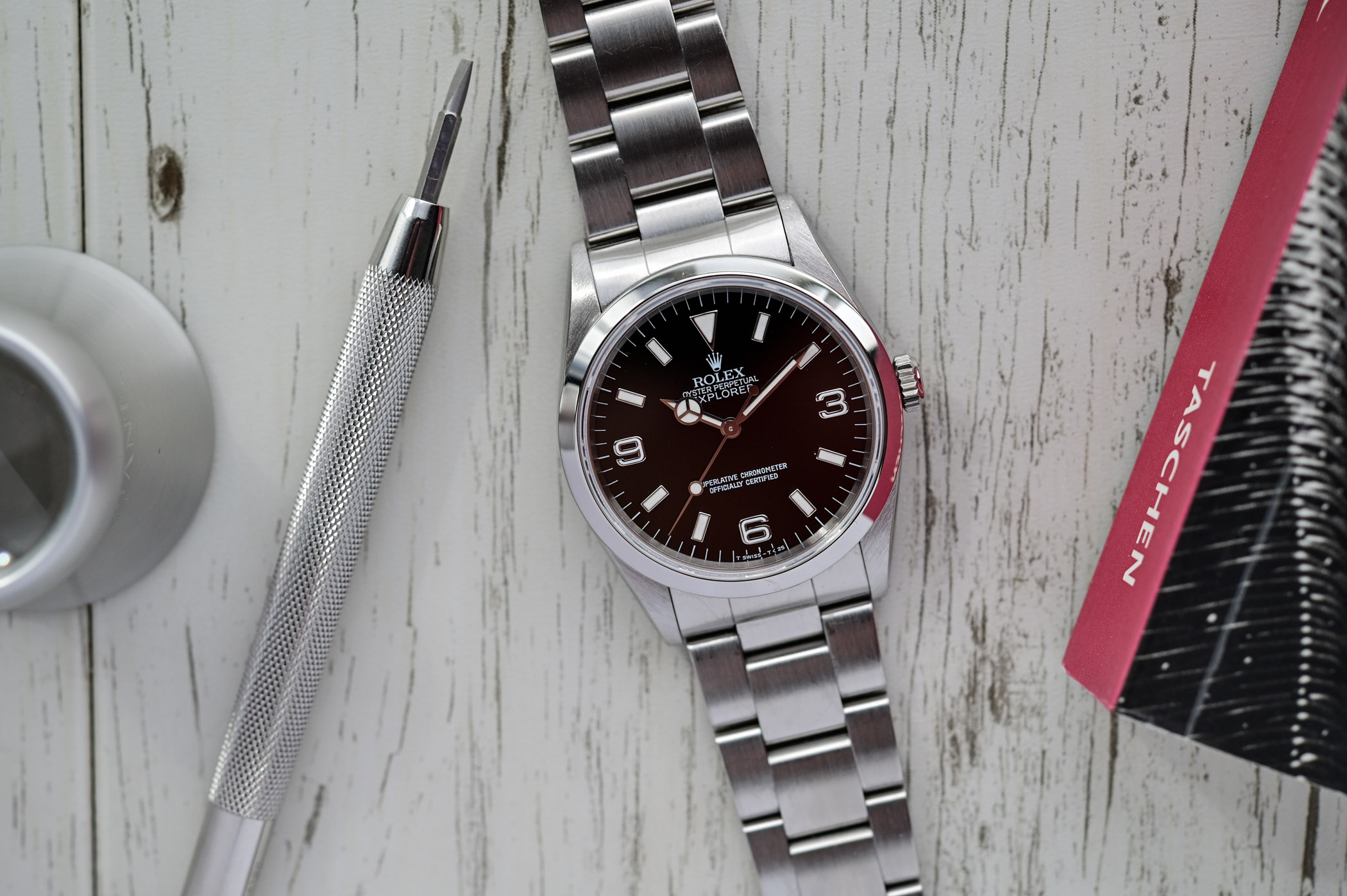
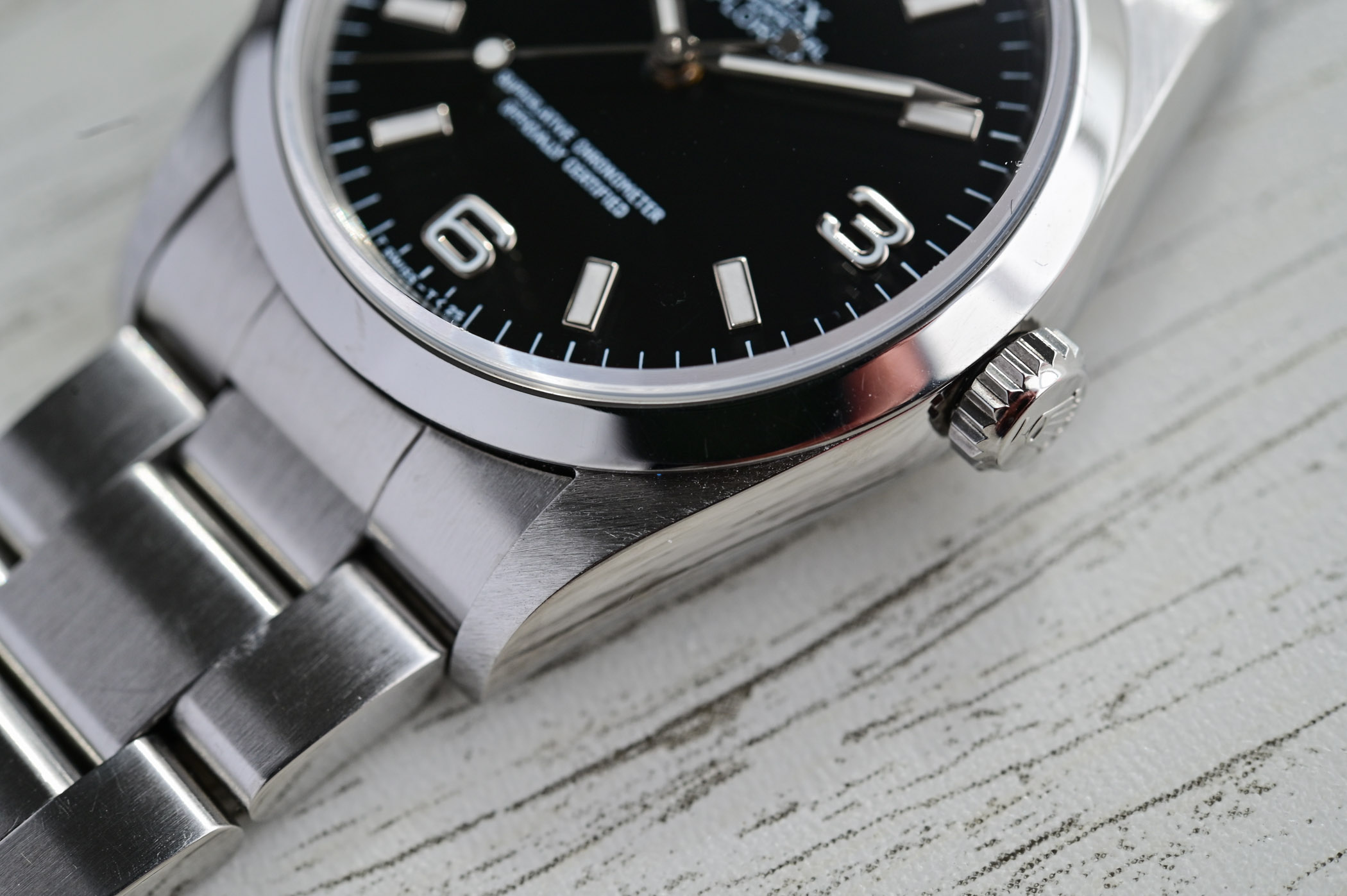



10 responses
Youngtimers, stay away from boomer Odets.
Great article! Although I am not into rolex (despite having tried several models) the 36mm explorer 1 has a real charm to it that is partly missing from it’s bigger brother.
I recently enquired about getting my 1016 serviced and was told vintage models have to go back to Rolex in Switzerland at a cost starting at £1400 plus any parts required, that is about two and a half times what I payed for it new. If thinking of buying one that is something which should be considered. It is a really nice watch, very comfortable to wear probably because it is much smaller than the current ones but you have to be careful with the acrylic crystal which needs a lot of looking after. A final thought , it probably is not a vehicle for investment. It cost new £600, the last one I saw offered for sale was priced af £11,500 (it looked like if had never been used though).
Very informative and well written. I purchased an early 80’s 1016 from Govberg years ago for 11K. The lume on the second hand was falling off and I debated having it repaired. LA Watchworks repaired the hand and it matches the watch perfectly. One purchase I have never regretted. 36mm is the perfect size for me. Highly recommend this reference.
I don’t understand yet. If I am getting myself a rather contemporary 14270, why don’t I go for the 214270 which could be even cheaper to get and maintain?
@Ren – the reason is the whole point of the article. Some people don’t want a big 39mm watch (which actually feels 41mm), prefer the style of older Rolex cases, to have a tritium dial, to have a more elegant watch. This isn’t about servicing, or maintenance. It’s about look, history, vintage appeal
Es un reloj que siempre vuela bajo el.radar nadie sabe que clase es ,el mío lo encontré en un negocio usado en buen estado a un precio soñado lo tenían a bajo precio como un patito.feo como si quisieran sacárselo de una vez por todas completo.buen precio (no.vintage) es un modelo anterior al último presentado es una máquina moderna con acentos antiguos y nadie sabe que clase de reloj es
Saludos
Great article, though I am not sure if all 14270s featured the 78790 bracelet. If you search the market, you will find that the earlier models came on a 78360 bracelet with the regular folding clasp, too, if I am not mistaken.
I love the 14270 because of Its modern dial and design with slight patina features (for those tritium dial). Great article!
Early 14270 tritium is the perfect daily